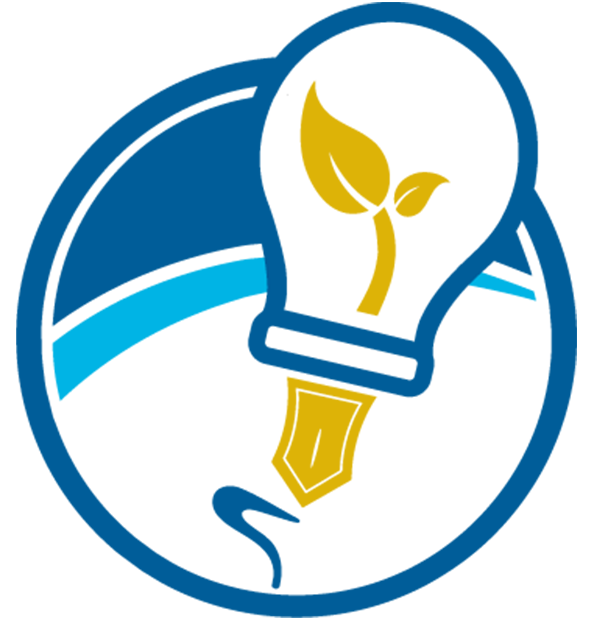An academic poster is one of many ways to communicate your research or scholarship. Researchers use books, talks, teaching, journal articles, press releases, popular media to communicate their findings. An academic poster, when done effectively, is a way to showcase your work at conferences and meetings in a concise and aesthetically pleasing format. It is a summary of your research project.
At a poster session, your ultimate goal is to share the story of your work with as many people as possible. This will give you the opportunity to network with people that may be future advisers, employers, or collaborators and you can receive important feedback on your work. To bring people in, your poster should communicate the topic quickly and include visual elements such as pictures, graphs, maps and diagrams as well as text. At its core, an effective poster is centered on a concise and powerful story. With the help of visuals, the presenter can share the story of the work in just five minutes.
Getting started with the poster:
- Are there any guidelines from the event or conference? Poster size and orientation? Required elements? (Be sure to size your poster or use a correctly sized template before you start designing!
- Posters can do "all the talking" or "some of the talking" or "highlights" the talking depending on whether the poster is meant to stand alone or be presented along side a presenter or team of presenters. Take this into consideration when deciding how much content you want to place on the poster. Word amount may also vary by field. Remember that the poster is primarily a VISUAL communication tool.
- What software will you use? PowerPoint is commonly used, but other illustration software applications can work well, too.
- What are the authors and in what order? Consult with your faculty research adviser on who should be included.
- Sketch out a layout. Make some rough drafts. Prioritize information giving the most important information a larger amount of space on the poster. Create an organized and logical pathway for reading the poster.
- Scientific posters commonly used sections:
- Introduction/Background (we do not recommend placing your abstract on your poster unless required) - Provides context. Clearly states your hypothesis. Explains why are you asking the research question.
- Methods - Outlines your research strategy, how you carried out your research, materials used.
- Results - Shares what was found out and shows the data.
- Conclusions/Discussion/Next Steps - Focuses on main takeaway points. Shares what the significance of the research is and future directions.
- References - Cites sources and credits any figures used in your poster
- Acknowledgements - thank individuals who contributed to your project and always acknowledge funding sources
- Select visuals: graphs, charts, photos, graphic models, illustrations, infographics. Make sure visuals are meaningful. Use the BEST ones not all the ones!
View the gallery of sample posters to start getting ideas and check out the resources listed below:
Templates
You will find many templates for posters on line, but remember that a template is just a guideline and you will need to resize sections and enter headings, photos and graphic components to create a poster that will be a visually engaging communication of your research. Ask your research mentor(s) for recommendations.
Note:
Your poster can be customized to what your research looks like! Not all posters have each section - it depends upon what you are communicating. Some posters will have more or less text, some will have more figures and photographs than others, some will have sections detailing specific parts of their research not included in this template.
Remember - people will be viewing your poster from multiple feet away! Include only the most important points about your research.
Can I use the university seal on my poster?
NO! You will see it on many older examples of UC Davis posters, but it is against policy to use the official university seal on your poster. You can use the UC Davis Wordmark: https://communicationsguide.ucdavis.edu/brand-guide/logos/uc-davis-wordmark
Before It's Printed
Proofread! Proofread! Proofread! Double check your captions and labels and numbers on your figures/graphs/charts. Read the content out loud. Have someone else proofread it.
Presenting your poster (the "pitch")
Your poster talk summarizes your research project in a clear, concise and captivating way. Consider your audience. Some conferences have general audiences and some will be conferences for specific fields and have attendees very knowledgeable in your field. The UC Davis Undergraduate Research, Scholarship and Creative Activities Conference attendees will include faculty, students, staff, friends, family, community college attendees and the general public. So you may need to modulate your presentation depending on the type of attendee. You can consider using questions such as "Are you familiar with..." or "Do you have a background in...". This can help you know to include more background and use more general terms for those unacquainted with your field or if you can include more field specific terms.
You will be standing to the side of your poster (not in front of it). Point to relevant parts of the poster so people can follow as you talk through it. Remember to also keep looking back to your audience to keep them engaged and feeling involved. Stay enthusiastic - your research is exciting!
A "tour" of your poster should be about 5 minutes at a comfortable, conversational pace. Poster presentations are often interactive.
Before you present
Practice! Practice! Practice! Practice with your mentors, colleagues, friends, room mates, etc. Ask them for feedback and what kind of questions they have so you can prepare for likely questions.
